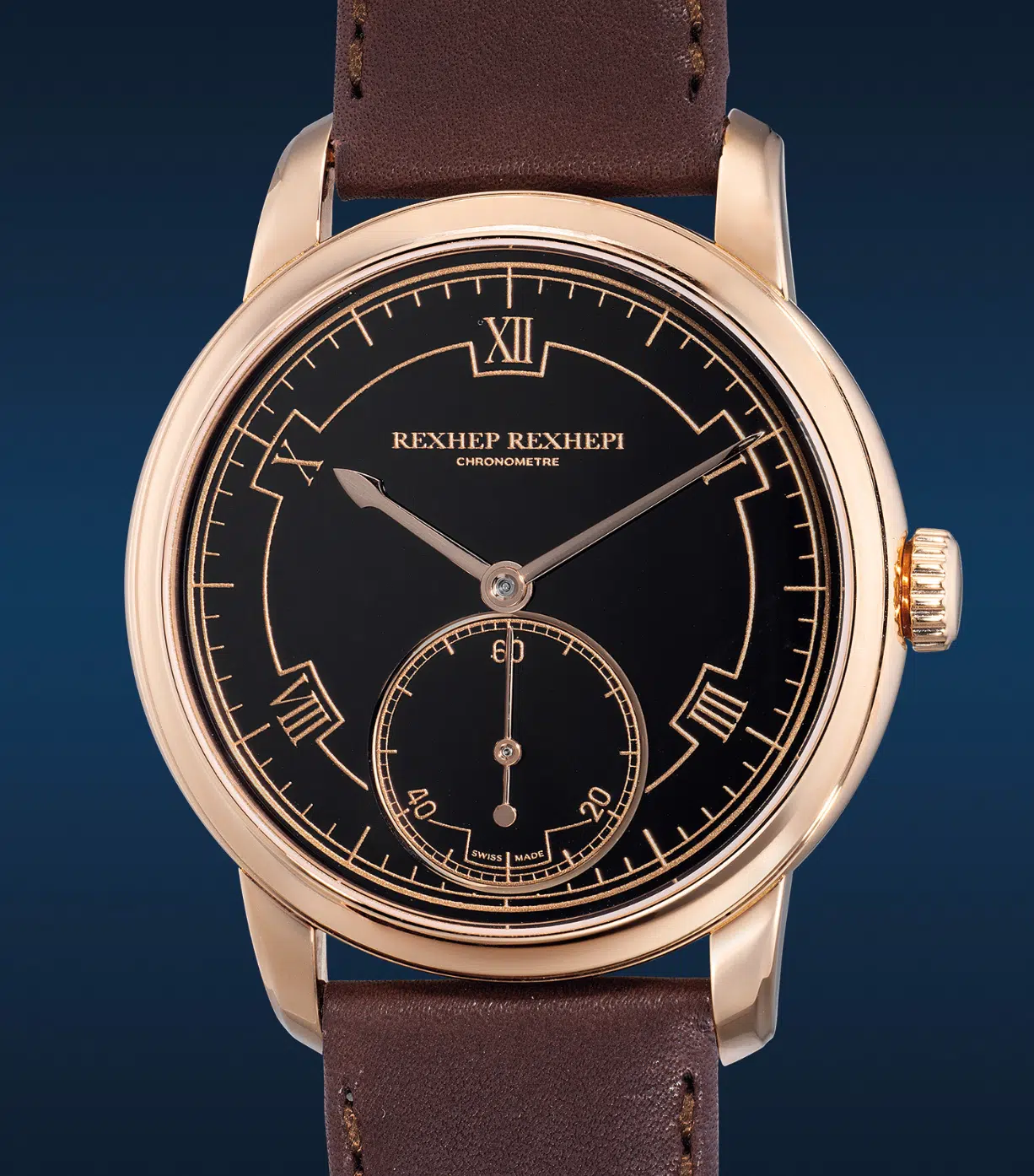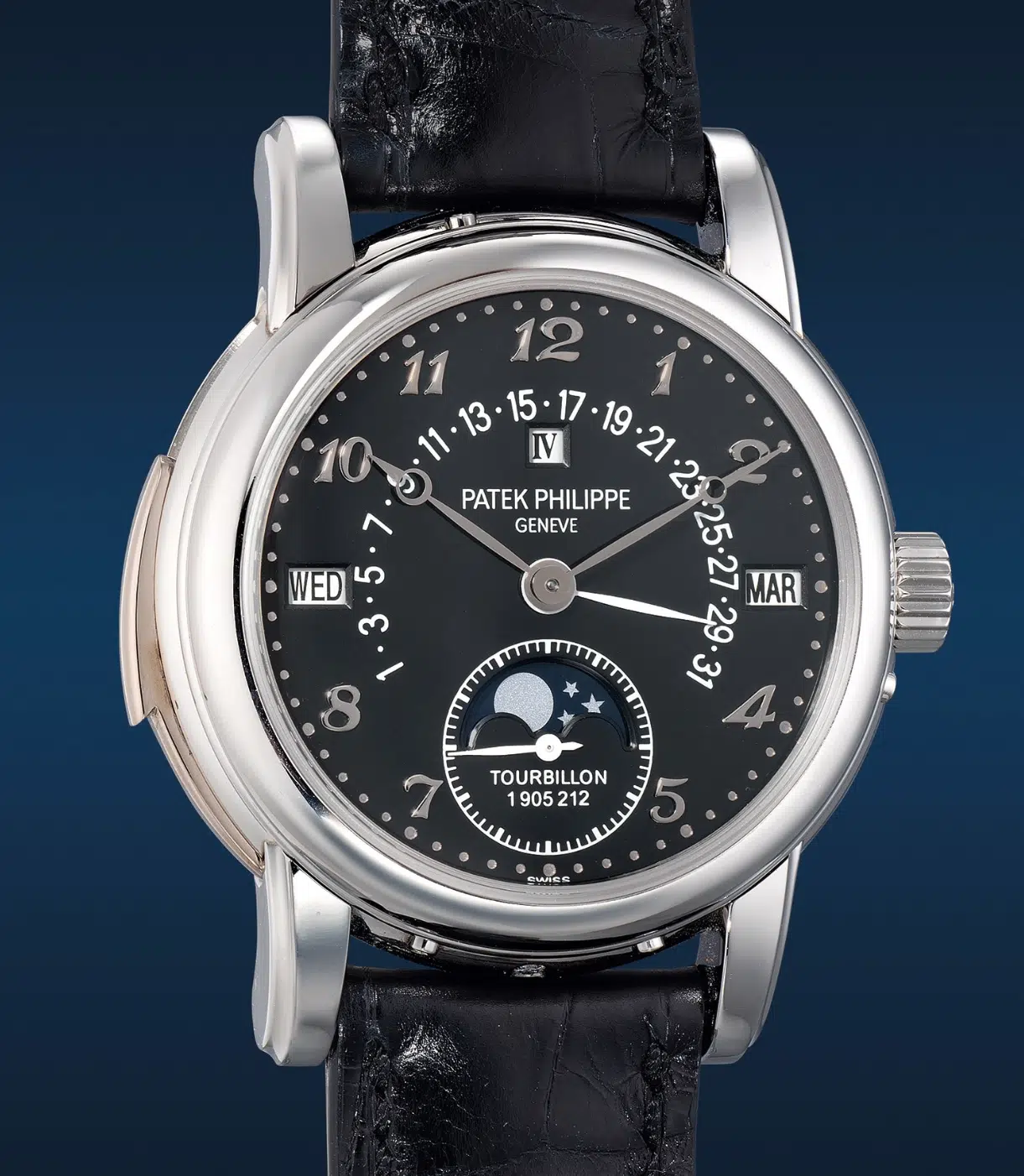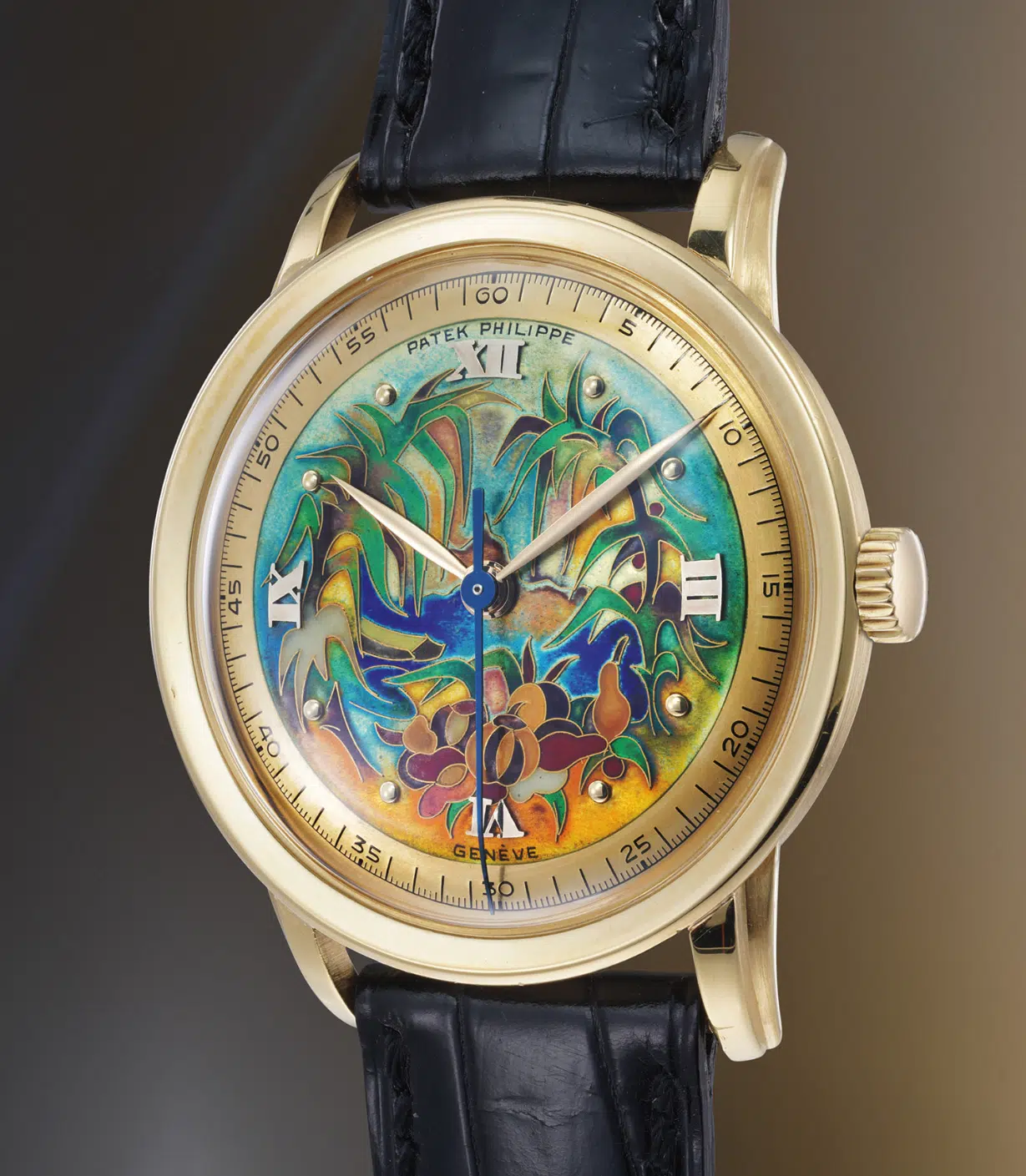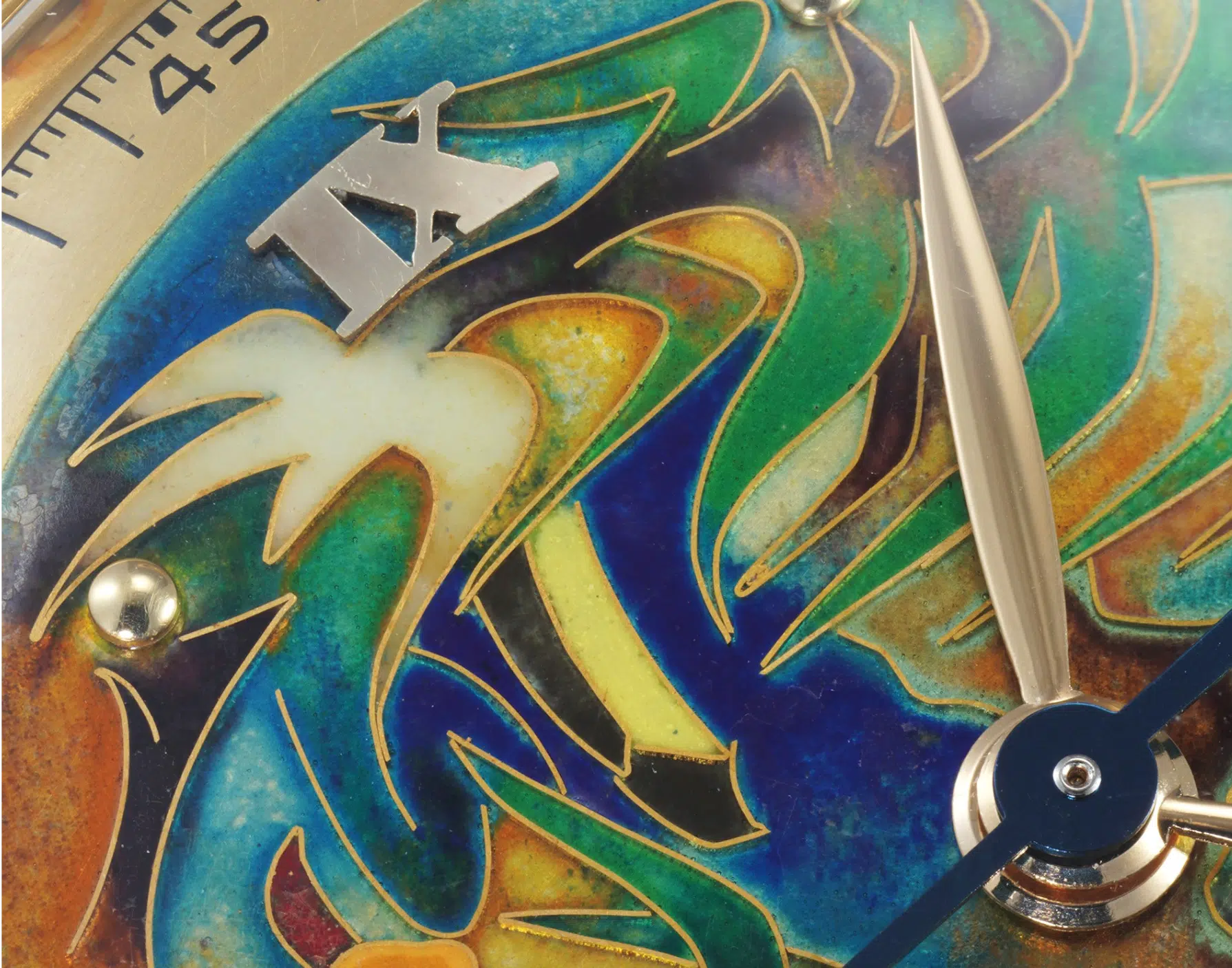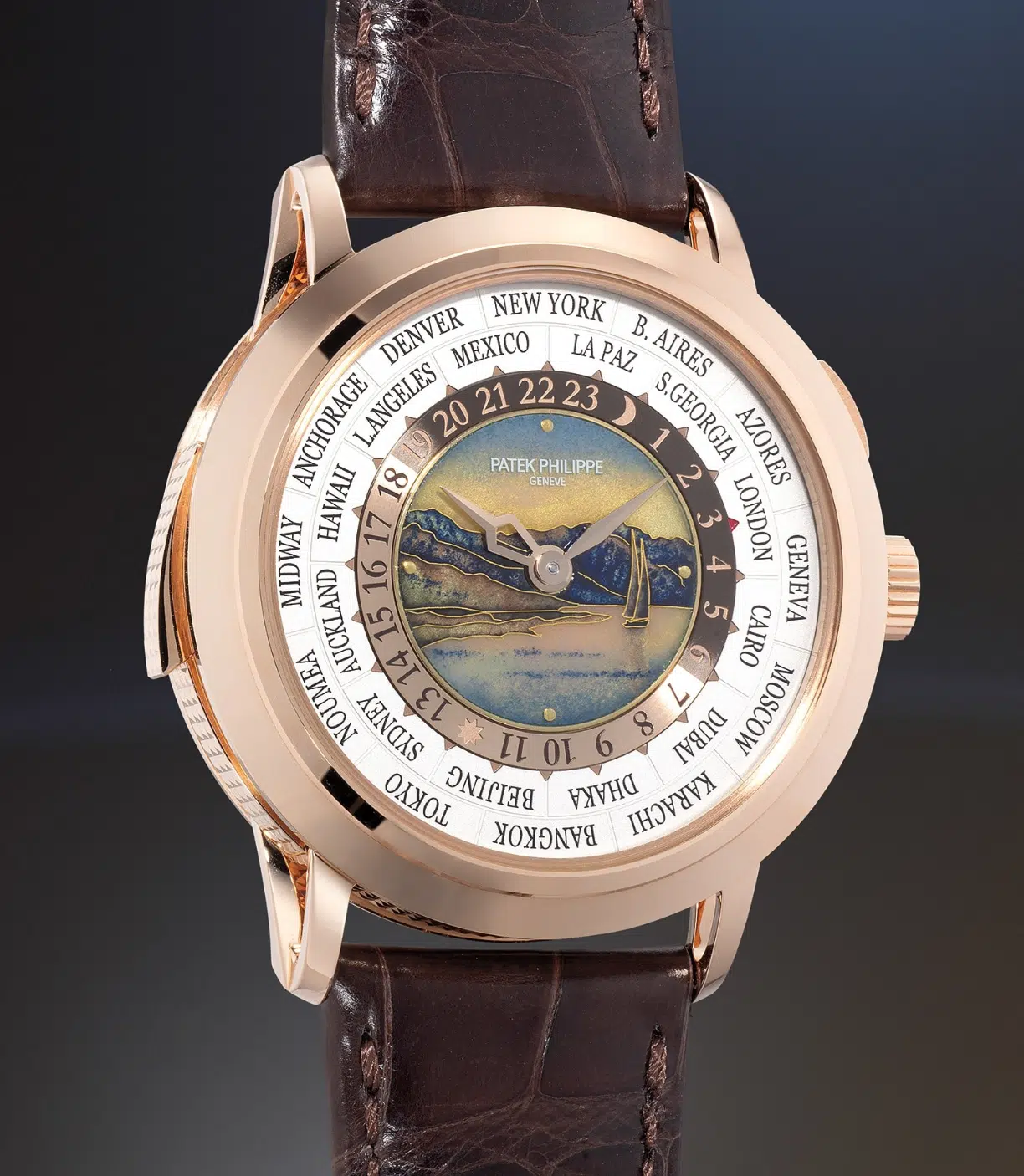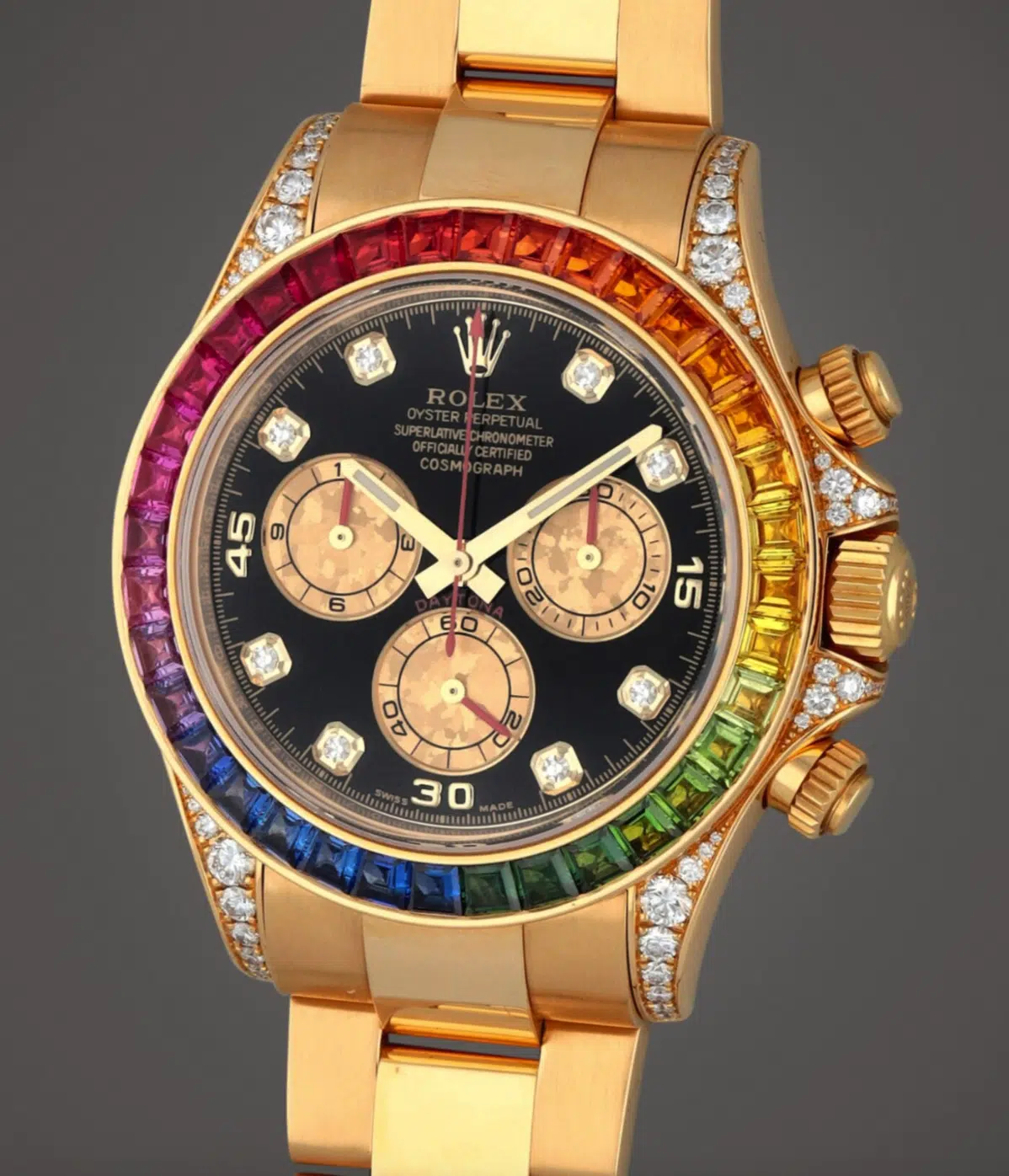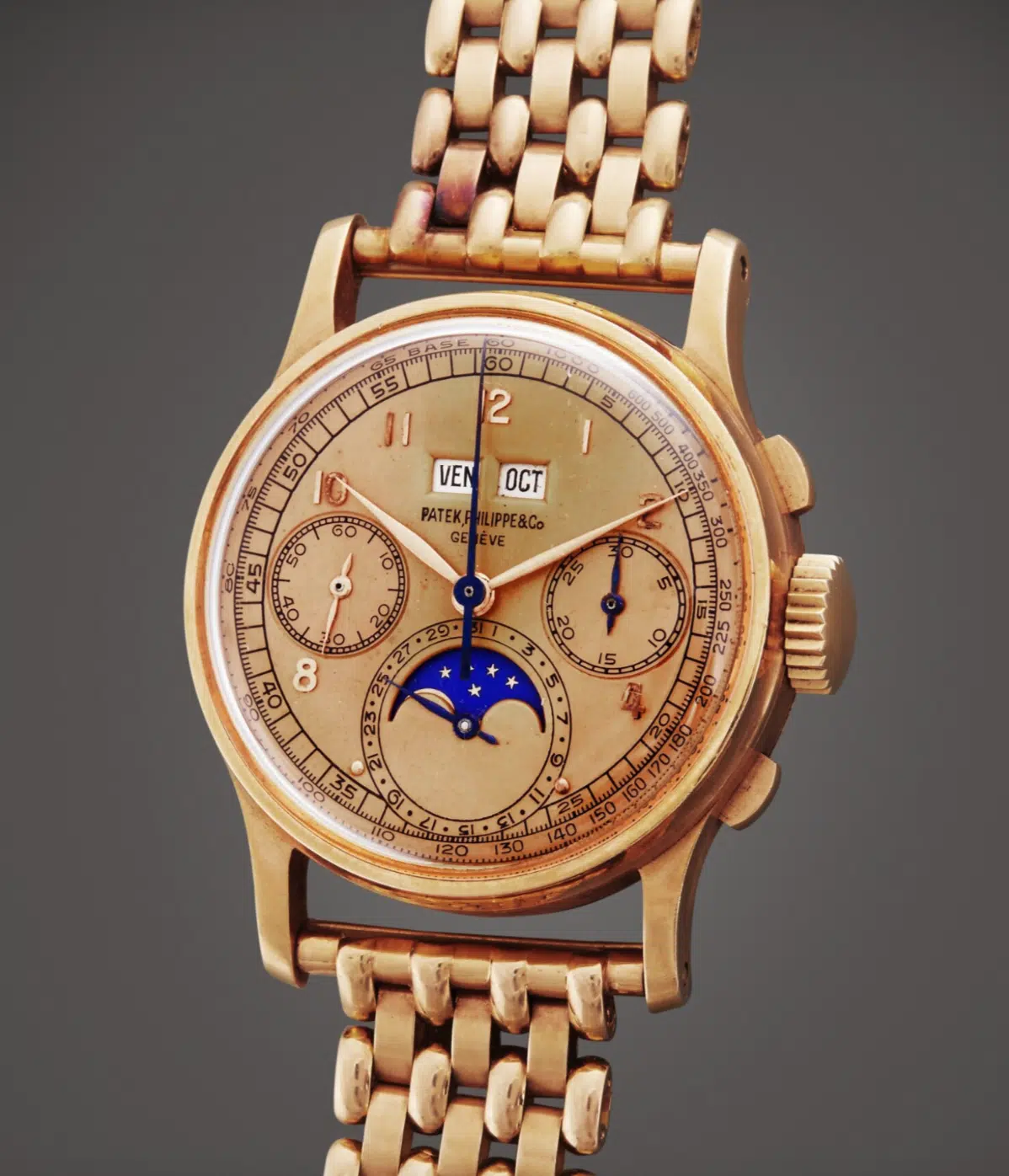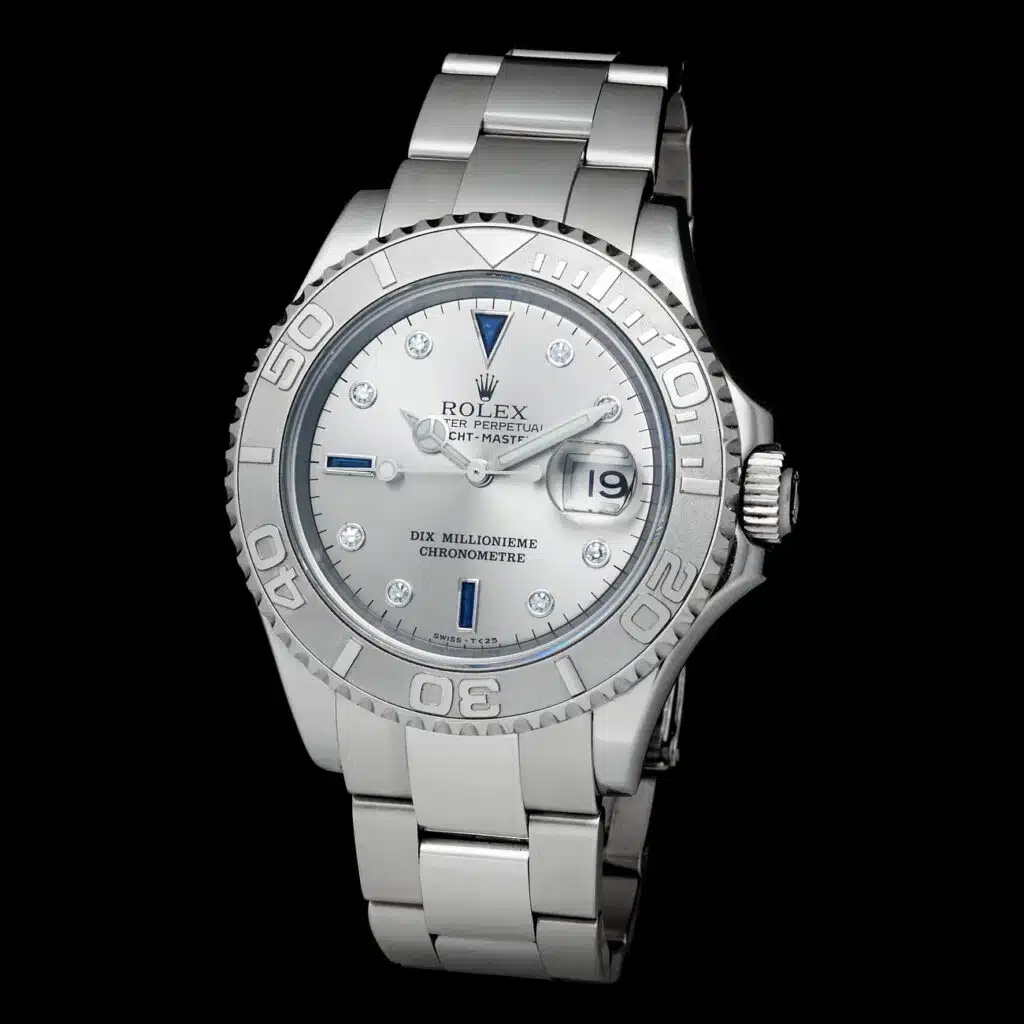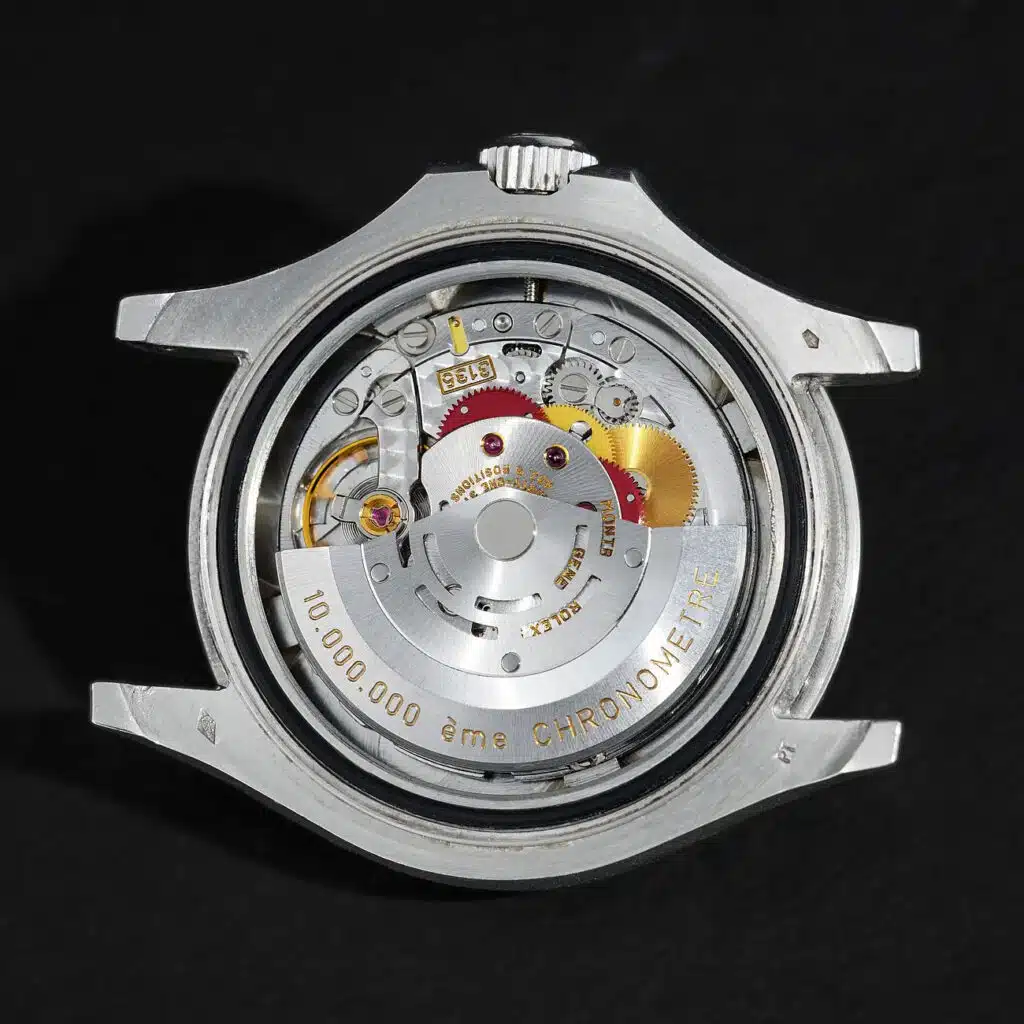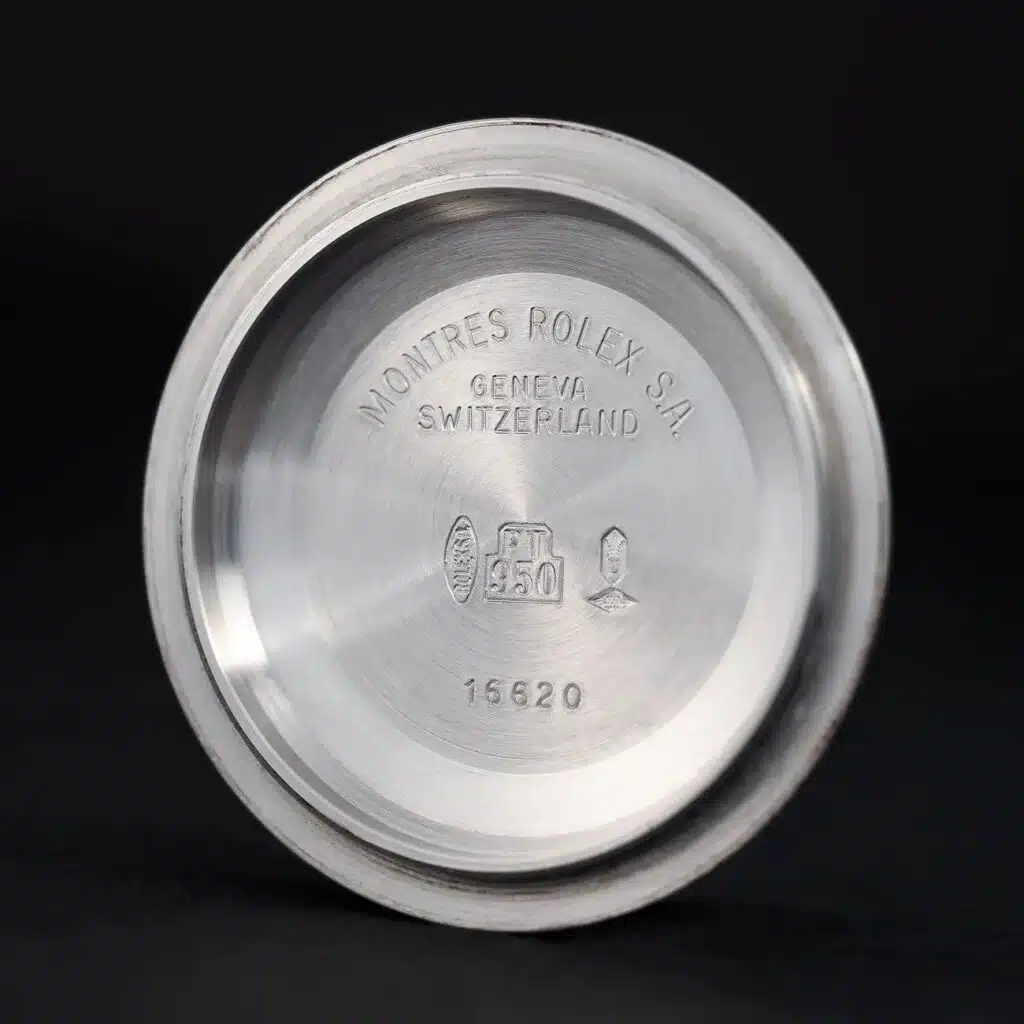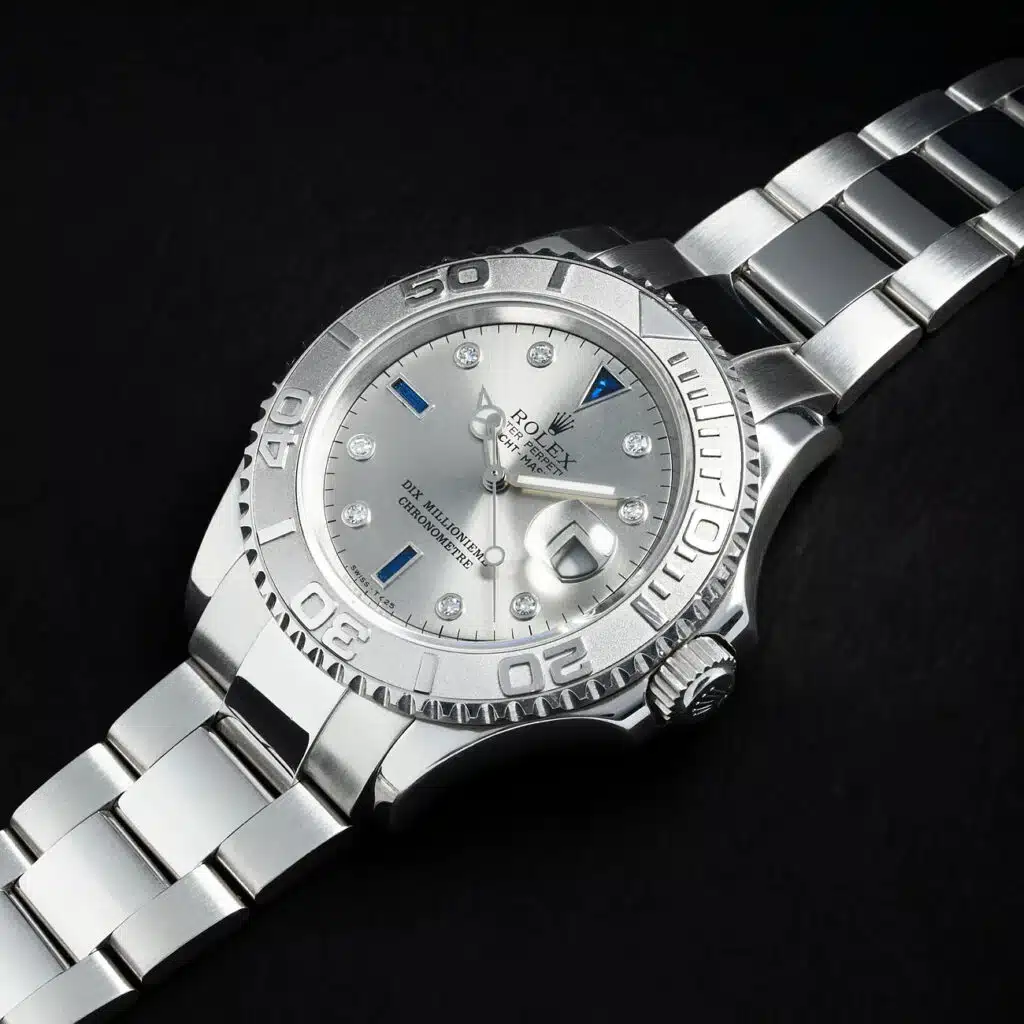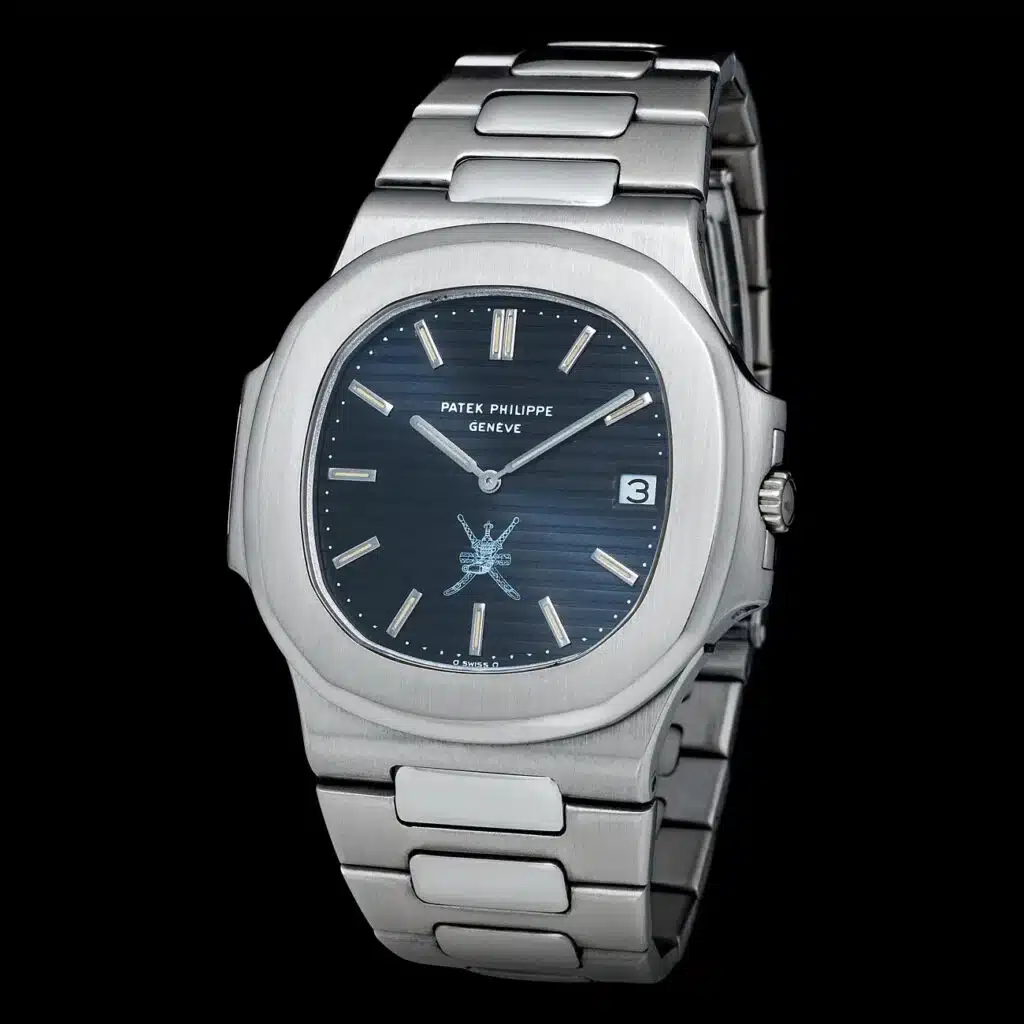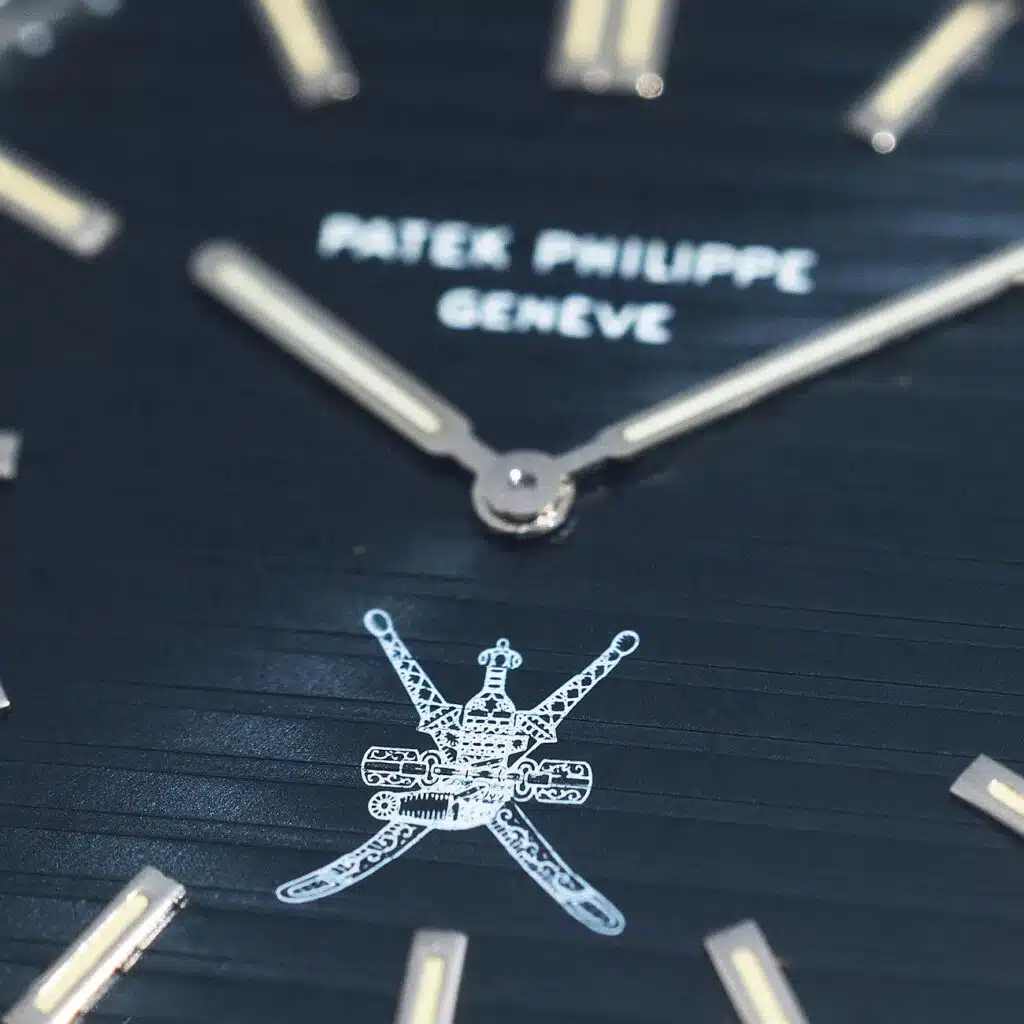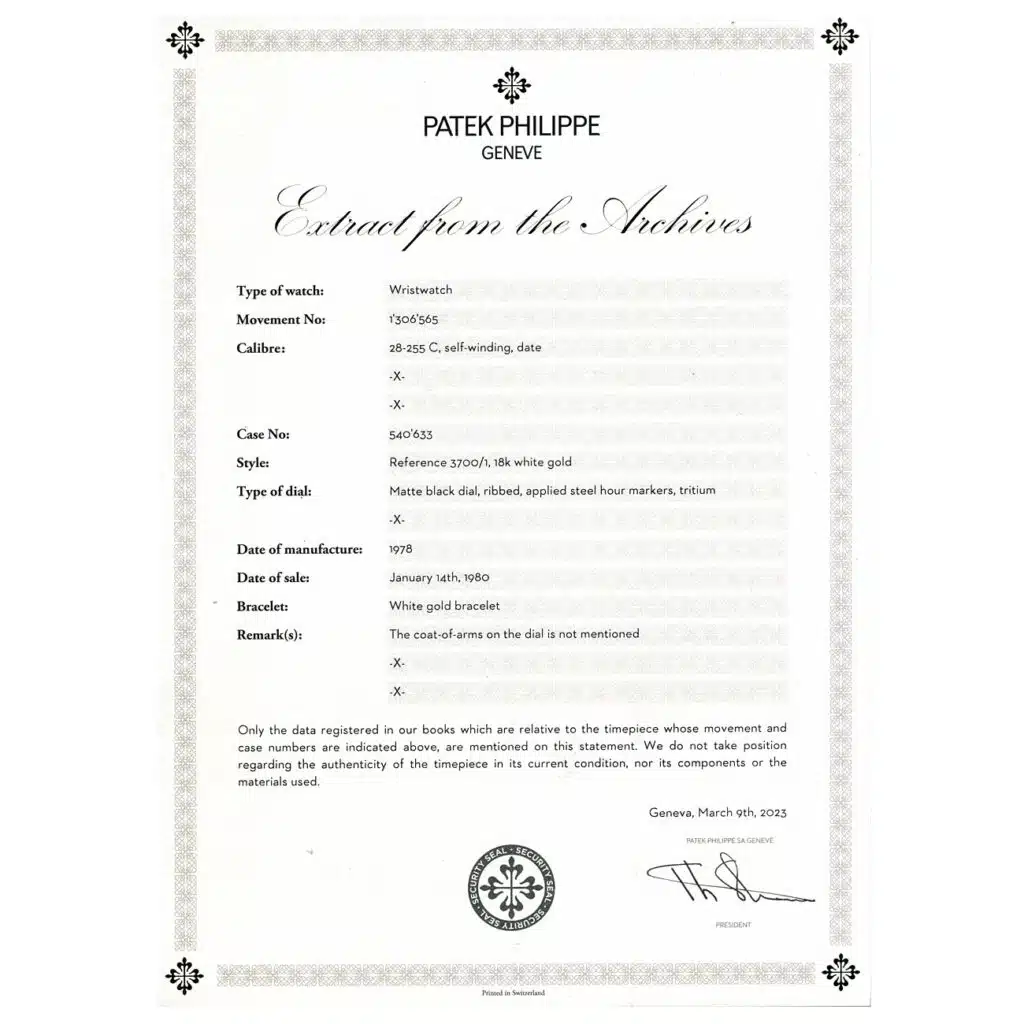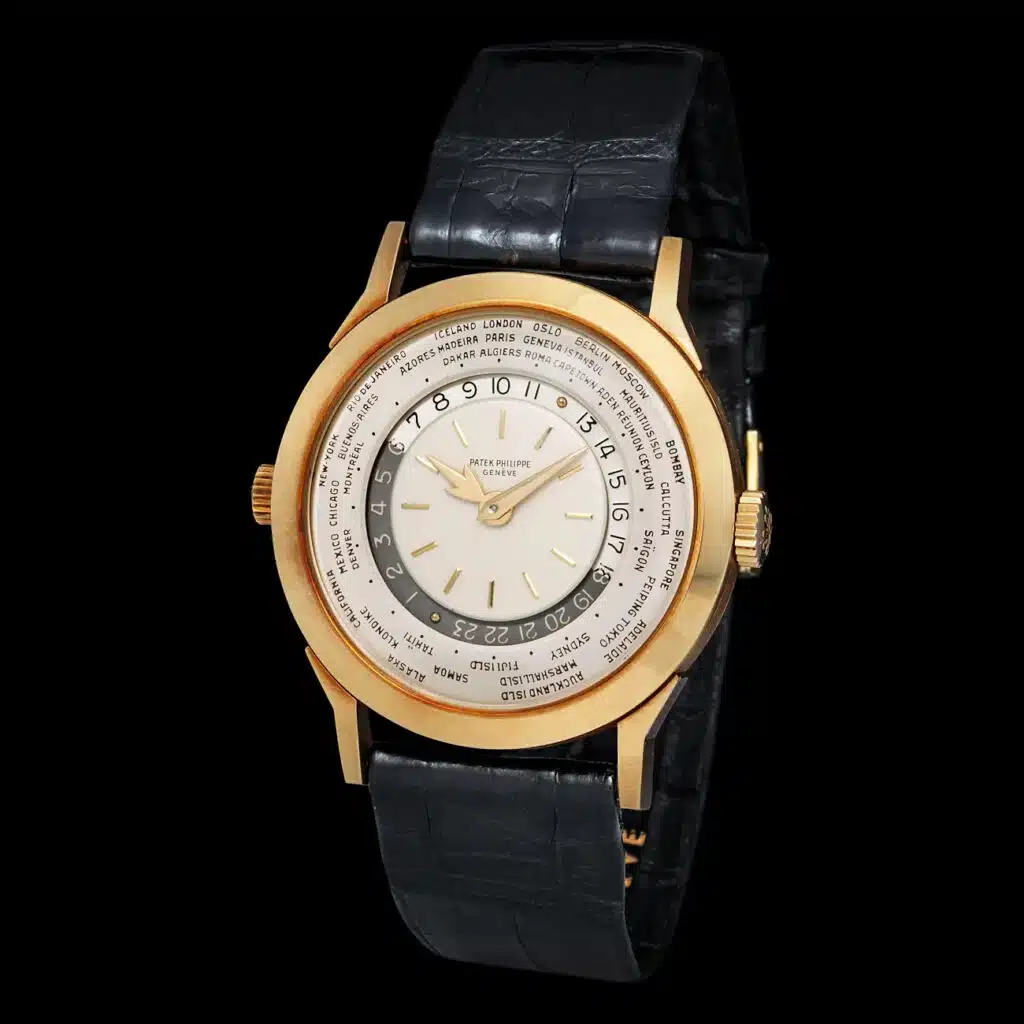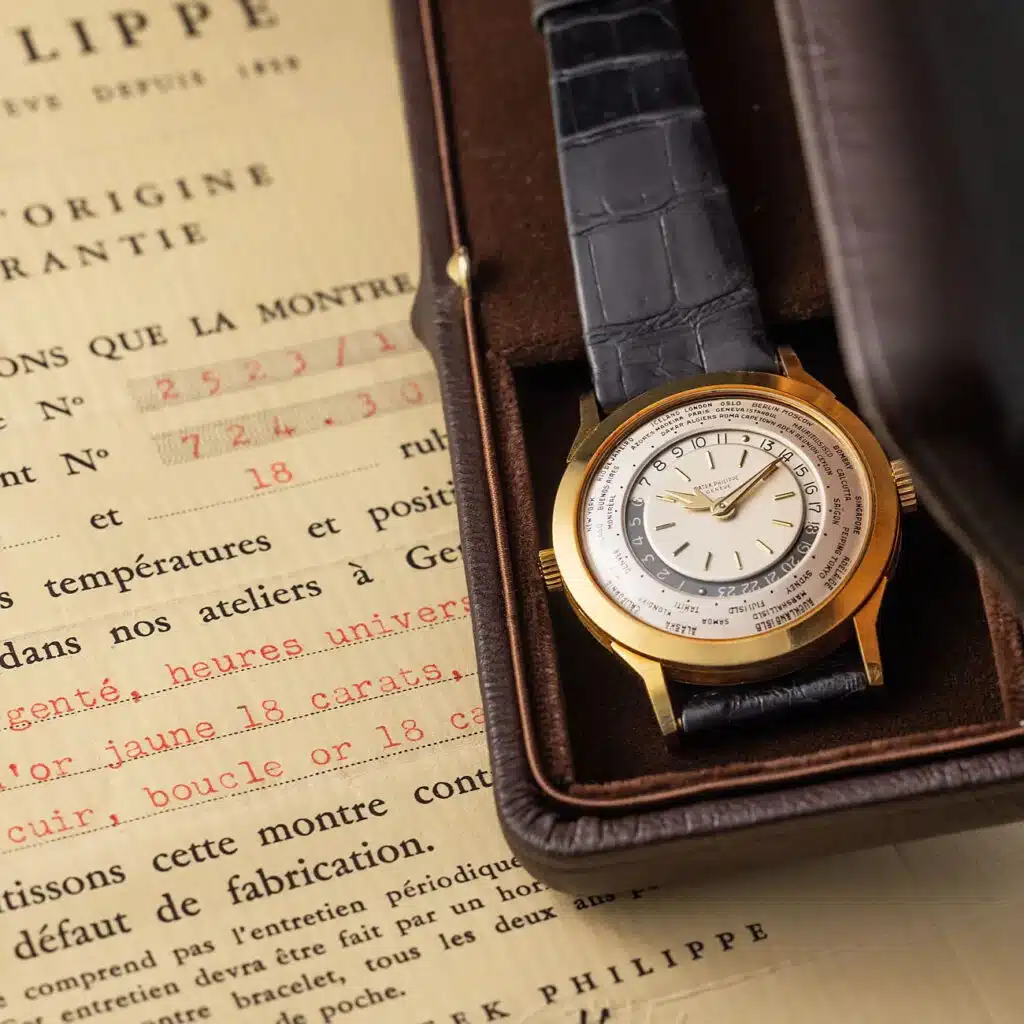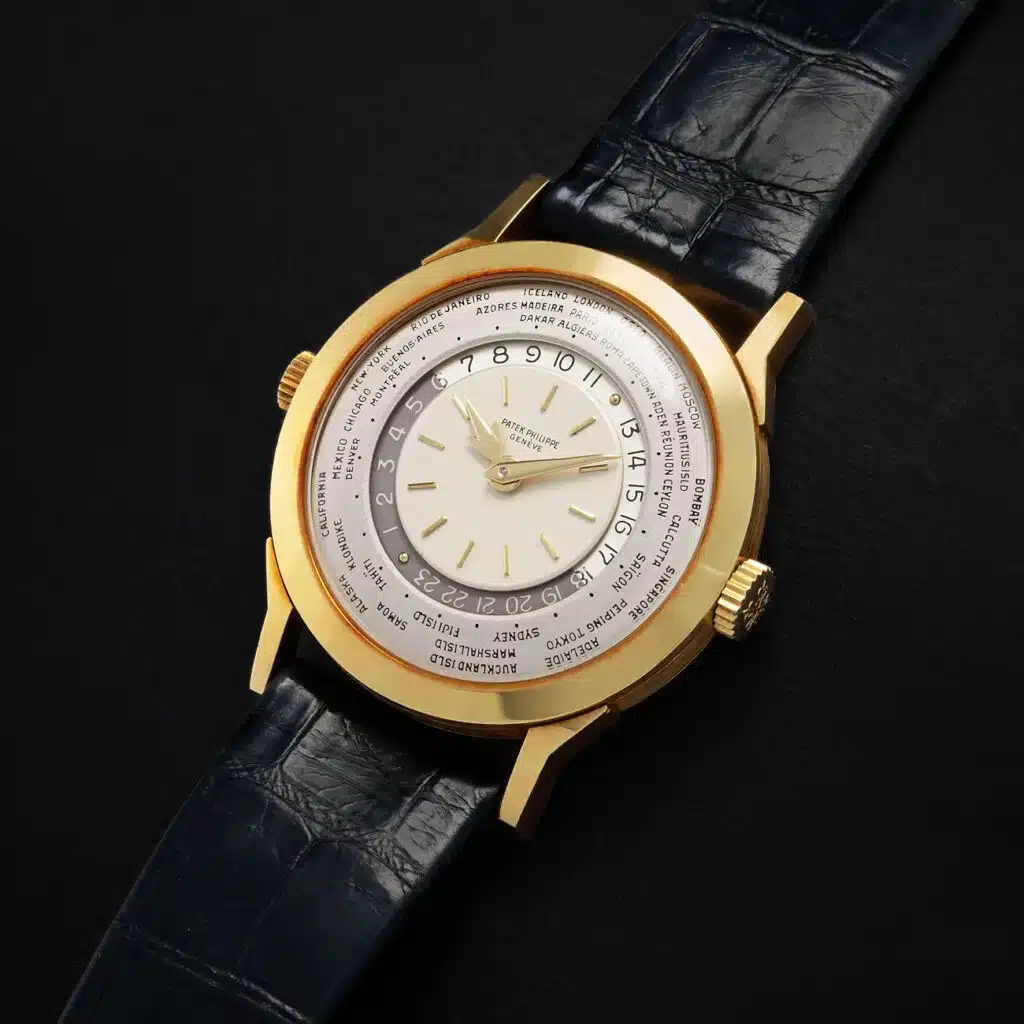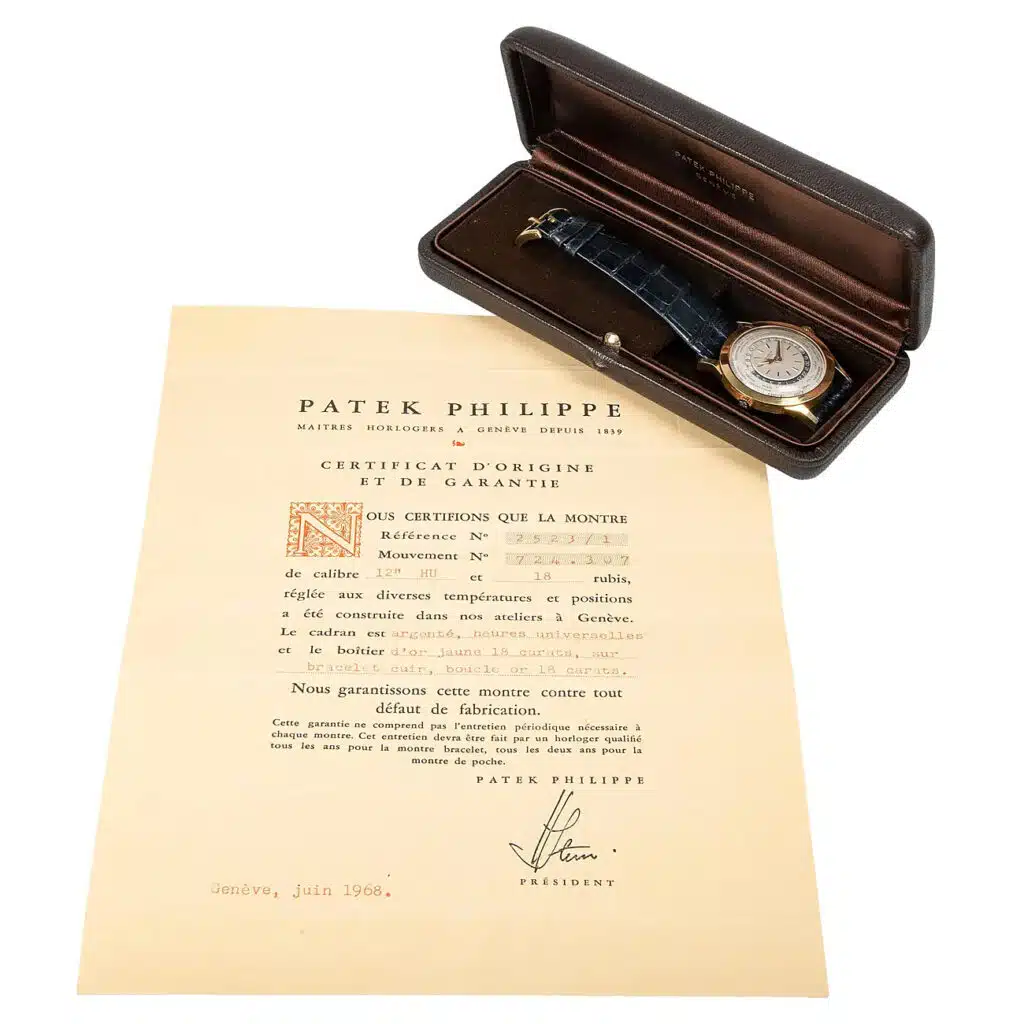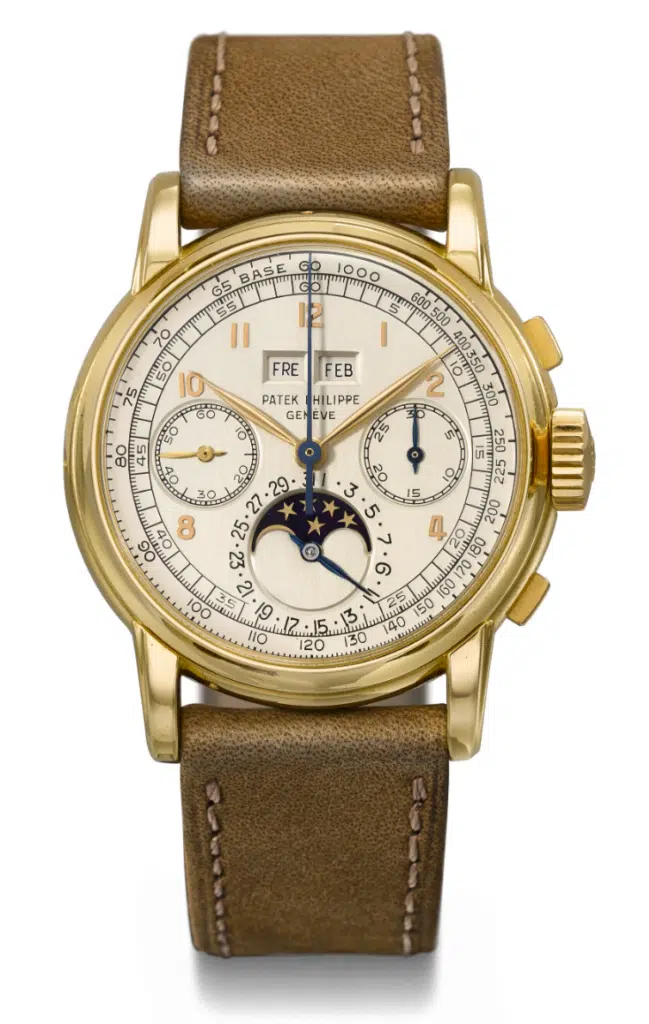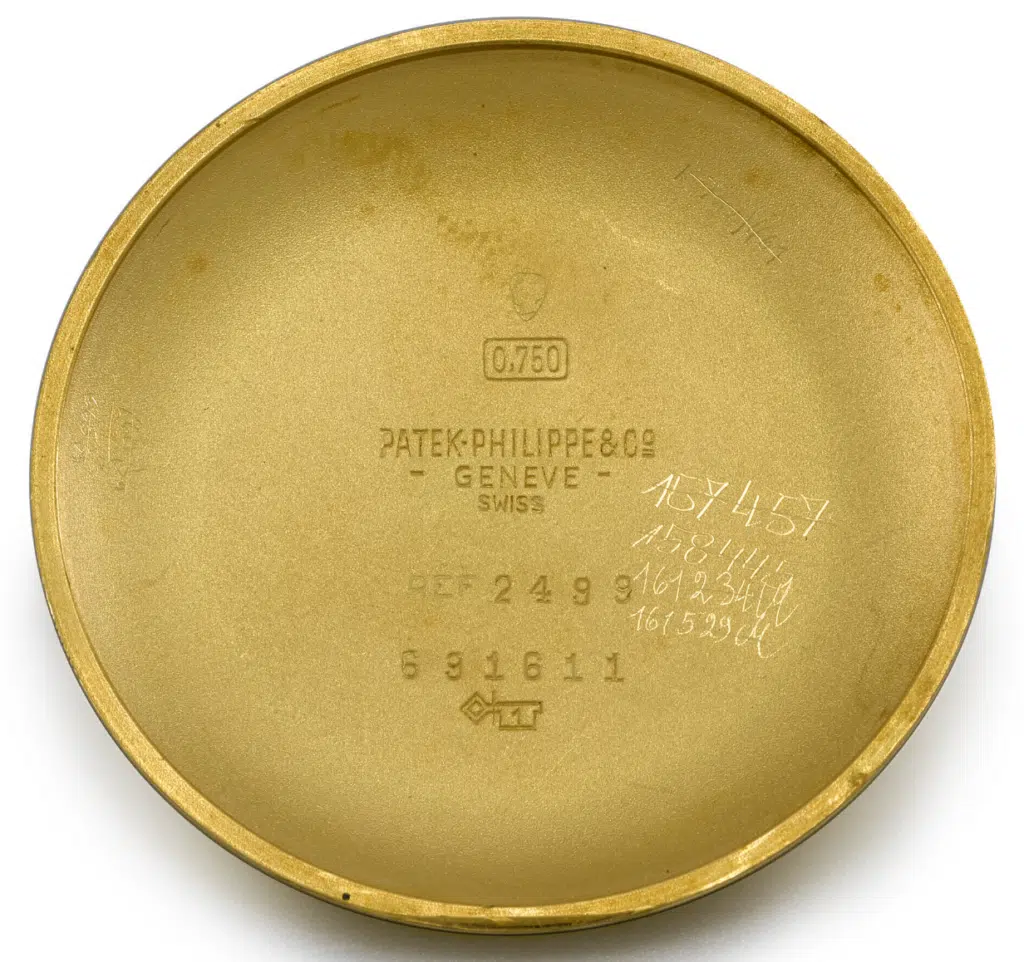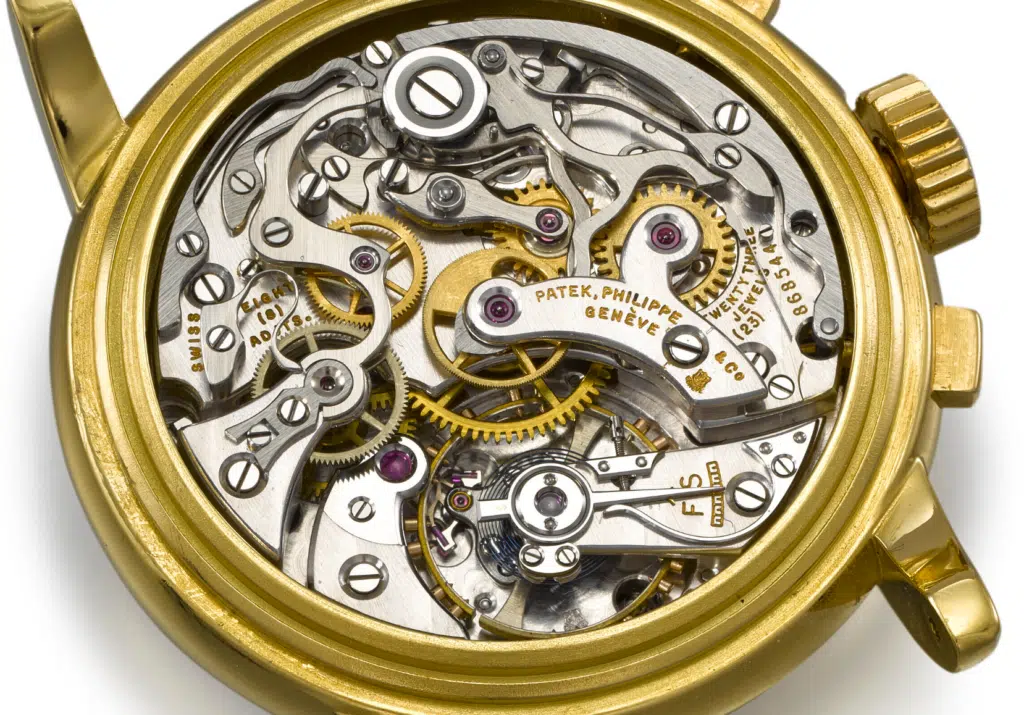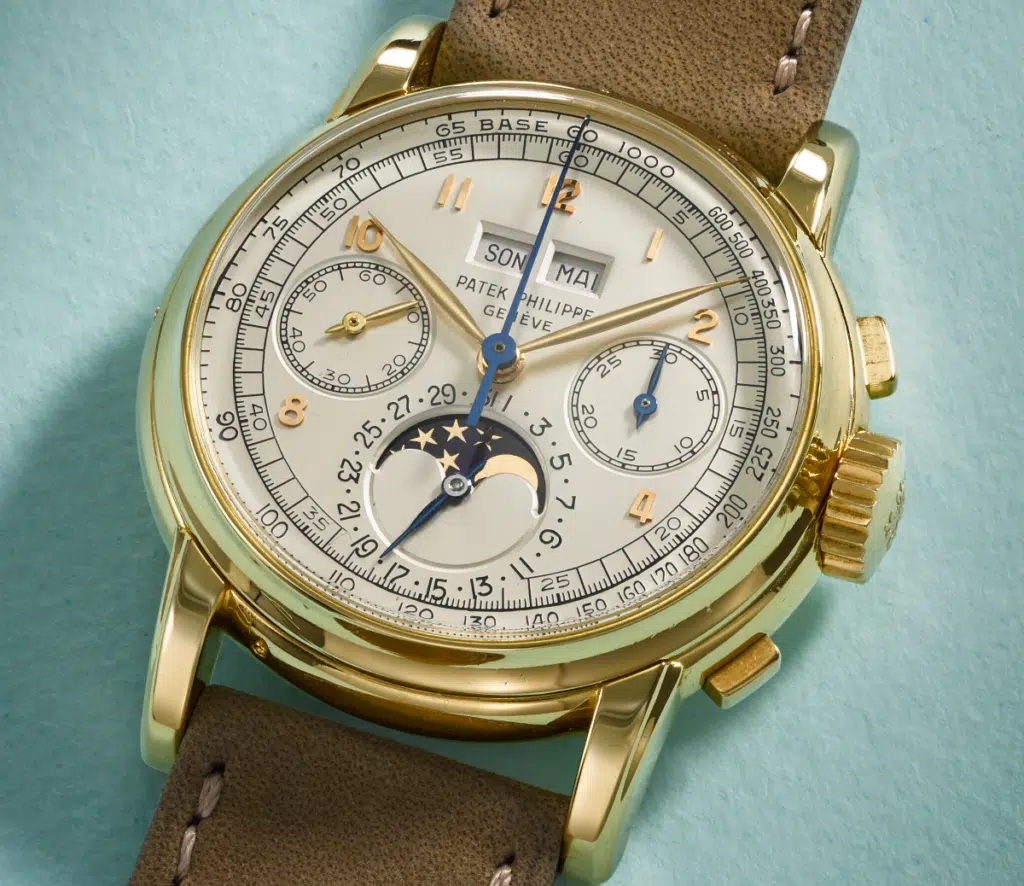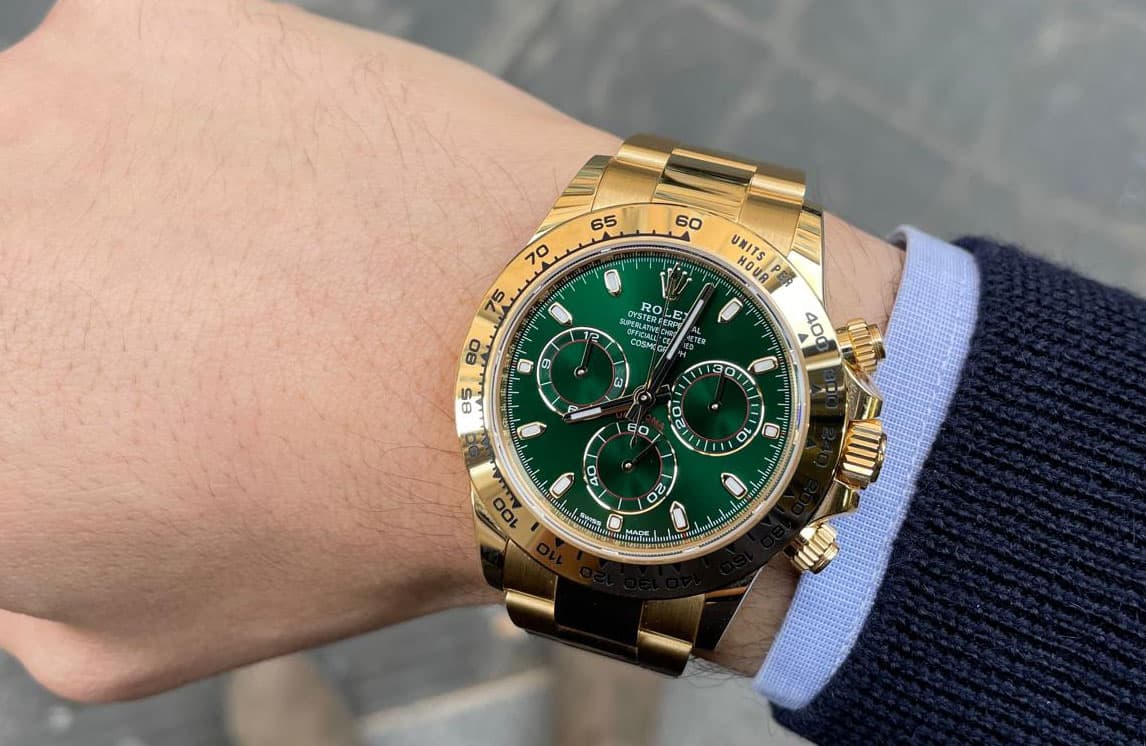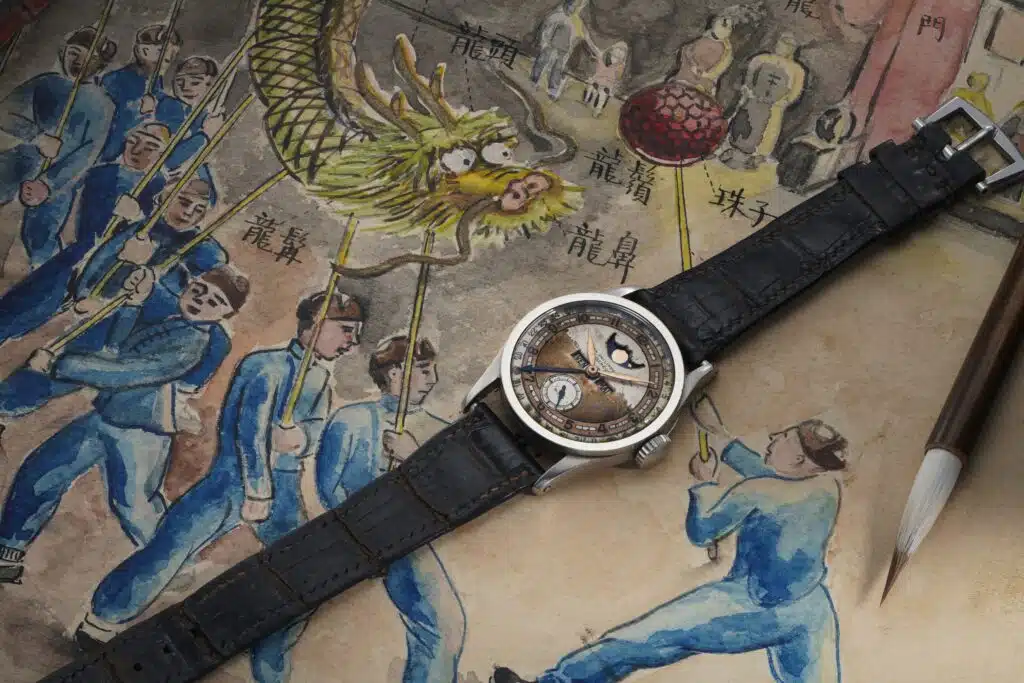
What is happening in collectible watchmaking? Having passed the speculative long wave that almost exclusively affected some contemporary production models, the world of hands has now resumed its most interesting and established path: that of vintage. The consequence is that trade, which never really died down, is becoming more and more interesting, followed closely by both traditional old-world enthusiasts and new Asian collectors, often young or very young.
Tangible evidence of the positive trend in vintage modeling and even the more recently produced "youngtimer" pieces are the results of the auctions held between May and June. Complicated Patek Philippe classics and sporty Rolexes, of course in the rarest or most precious versions, finally returned to the center of attention, alongside interesting new entries such as the independent Rexhepi, which even managed to credit itself as the top-lot of a Phillips auction.
Let us now discover together the pieces that received the highest adjudications.
Phillips in Association with Bacs & Russo
The Geneva Watch Auction: XVII
May 13 - 14, 2023
1988 Rolex Daytona ref. 6270
Movement number 14,754
Cash register 8,439,969
Sold for CHF 3,690,000 (top lot of the auction)
Today seeing a men's watch with a diamond case and dial , has become a not-so-rare experience in the world of Haute Horlogerie. The same "didn't" happen in the 1970s and 1980s, where precious stones were still relegated to women's modeling. What pushed Rolex into making these models was one of the Geneva-based company's most important clients, if not the most important ever: His Highness Sultan Qaboos bin Said Al Said of Oman (1940-2020).
It was at his specific request that the first two Rolex sports references with precious stones came to light. The first, Reference 6269, is distinguished by its brilliant-cut diamond bezel, diamond-paved dial, and gold-plated auxiliary counters. Produced in less than thirty pieces, it is a collector's dream. The second one with reference 6270 (pictured) even surpasses its "brother" 6269, and that is both in terms of rarity and probably also in terms of beauty.
With only eight pieces known to the market (including this one beaten by Phillips), the 6270 is undoubtedly one of the rarest standard production Rolex references (assuming that term can be applied, in this case)-and the rarest of the Daytonas. Curiously, this specimen appears to be part of the very first batch made, as the first three known case numbers for this reference are the consecutive 8'439'967, 8'439'968 and 8'439'969 (the current watch). The other known examples bear the serial 9'091'4xx (2 examples); 9'827'95x (2 examples); and a single example 8'761'106. Although this distribution suggests the existence of unknown pieces, scholars agree in estimating production in enormously limited numbers overall, most likely between 10 and 20 specimens in total.
Aesthetically, its design is as striking and luxurious as its production is limited. The bezel is still set with diamonds like Reference 6269 but the stones are baguette-cut, the ultimate in stone quality and appearance. In addition, the subsidiary counters are a cobalt hue never seen before (or ever), shifting slightly depending on how the light hits them. The end result is absolutely breathtaking.
Patek Philippe Ref. 2499 from 1953 Rose gold
Movement number 868'606
Case number 696'518
Sold for CHF 3,206,000
There are a few iconic models that are unquestionably considered to be at the pinnacle of hand collectibles. They are the ones most desired and sought after by enthusiasts and collectors of the highest caliber.
These pieces usually combine rarity, technical expertise, and exceptional aesthetics in such a way that they have been recognized for their importance since the beginning of watch collecting some 40 years ago. The Patek Philippe reference 2499 is undoubtedly one of these treasures, considered by some to be the finest vintage design ever created. Starting from a generally very small production run, estimated at 349 pieces, when it comes to early pieces (first and second series) its rarity and appeal skyrocket.
As if all this were not enough, the second series rose gold production of ref. 2499 is so rare that the eight pieces identified today are all considered to be the "Mona Lisa" of watch collecting. Their latest appearances are as follows:
868,226 - last auction appearance 2013
868,605 - last auction appearance 1999
868'606 -the model in the photo, from a European collection
868'609 - formerly owned by Eric Clapton, last on the market in 2022
868'611 - last on the market in 2001
868'613 - last on the market in 2011
868'626 - last on the market in 1989
868'752 - originally discovered in Italy and sold at auction in 2009
Adding to the overall appeal of a Second Series 2499 in rose gold, the piece sold at auction by Phillips was not only one of those that have been missing from the market the longest(it last appeared at auction in 2001 and has remained in the same collection for the past 22 years) but moreover one of those in the best preserved condition.
Patek Philippe Ref. 2499, 1951 Yellow gold
Movement number 868'247
Case number 665'014
Sold for CHF 2,359,000
The high adjudication, well in excess of two million Swiss francs, is justified by the fact that this is a piece never before seen on the market and one of the most fascinating and secure pieces ever put up for auction. It was offered for sale by a descendant of the original owner and, in fact, the watch can boast the title "Royal Timepiece" as the consignor is one of the last scions of a historic royal lineage.
The first series of reference 2499 is not only the most immediately recognizable of the four that followed over time, as it features square pushers instead of the round ones seen on all the other series, but also the rarest. Two different manufacturers were used to make the cases. As a result, the cases in the first series show subtle differences depending on the workshop. The earliest examples made-such as this piece wrought by Phillips-feature a Vichet case, defined by its flat back and more "claw-like" and downward-facing lugs. Later examples are made by Wenger-they would make almost all the cases for the rest of the 2499 production until 1985-and feature a slightly larger diameter, less markedly downward-pointing lugs, and a domed case back.
In terms of the dial, the first series features the same design as ref. 1518 although some elements have a variation: the date ring may be enclosed by an outer wire (identical to the main ref. 1518) or have no such delineation, and the hour markers may be Arabic or baton-shaped. Like their ancestor ref. 1518, the dials of the first series feature a tachymeter scale and binary minute divisions, combined with Arabic 5-minute divisions and fifths of a second line. In fact, the earliest dial design found on 2499-and exemplified by the present watch-features a closed date window and Arabic numerals, making it a perfect imitator of a ref. 1518 dial.
Rolex Milgauss Ref. 6541, 1958 Steel Ø 38 mm
Movement number N782694
Case number 412'399
Sold for CHF 2,238,000
One of the rarest Rolex models, but also probably the best-preserved and most complete example of a Ref. 6541 that has ever been presented at auction.
Made beginning in 1956, Ref. 6541 represents the first iteration of the Milgauss. The model was aimed at a very specific, albeit new and growing market at the time: scientists, engineers and technicians working with high magnetic fields in electroindustrial environments or scientific facilities.
Made in 1958 the one being auctioned is the best-preserved example Phillips in Association with Bacs & Russo has ever sold at auction. Most likely unpolished, it shows all the original factory finishes and specifications, from the bevels on the side of the lugs to the red-tipped bezel and even the sharp milled edge on the case back. The razor-sharp edges, along with the contrasting polished and brushed finishes are undoubtedly original.
The most visible feature is its unusual and majestic seconds hand in the shape of a lightning bolt. The dial is black "Honeycomb" type beautiful and extremely rare, with circular hour markers and faceted triangular hour markers at 3, 6 and 9 o'clock
Its kit is impressive: Rolex chronometer certificate, warranty, Milgauss documentation, additional chronometer certificate dated June 14, 1960, tag and box.
Phillips in Association with Bacs & Russo
The Imperial Patek Philippe Sale
Hong Kong May 23, 2023
May 13 - 14, 2023
Patek Philippe Ref. 96QL, 1937 Platinum
Movement number 198'299
Case number 294'462
Sold for HK$48,850,000 (about 5.7 million euros)
An extraordinary watch that belonged to the last Chinese emperor of the Ging Dynasty-Aisin-Gioro Puyi (1906-1967).
From the day the Patek Philippe Ref. Puyi 96 Quantieme Lune was sold in 1937, it was clear that it was a piece of immense value: it wasone of eight such pieces known (five of them in platinum, two in gold). Researchers at Phillips Auction House, which sold it in Hong Kong on May 23, 2023, traced the original sale to Guillermin, a Parisian luxury store then located on Place Vendome, home to some of the world's leading jewelers.
The documentation is clear: Emperor Puyi took this timepiece known as "special item No. 45" with him to a prison camp in Khabarovsk (a city in far-eastern Russia) and later gave it to Georgy Permyakov, his interpreter. The deposed emperor and his entourage, along with Japanese officers and ministers from Manchuria captured by the Soviet Red Army in 1945, were forced to live in that remote town.
In his memoir, Aisin-Gioro Yuyan, Puyi's grandson, says, "In the Manchukuo period, Puyi wore this exceptional watch daily, which I was particularly fond of, not only because of its superb quality, but also because it was such a personal item."
On July 31, 1950, two senior officials approached the former emperor's cell. As Yuyan recalled, Permyakov said, "The Soviet government has decided to let you return to China. You must quickly pack and get ready at once. Hurry!"
Puyi turned to Yuyan, "Do you still have the platinum watch with built-in calendar with you?" he whispered, "Yes, I'm wearing it," Yuyan replied.
"Please take it off," Puyi said. Without hesitation, Yuyan removed and returned his beloved platinum watch to Puyi, who handed it to Permyakov. The Russian slipped the watch into his pocket. Upon his death, he bequeathed the watch to his heirs.
Extraordinary isthe history of its dial, which is really the first thing one notices when examining this Patek Philippe reference 96QL . The watch, equipped with a French calendar, has aged with a fascinating and in some ways bizarre patina. But what is most striking is its color, half off-white and half brass. Unlike the other two known examples of this model, surrounded by a rose gold ring, Puyi's watch has a patina perfectly aligned with the top edge of the calendar apertures, just above the 3 and 9 o'clock hour markers.
Why had someone altered the clock face? Was it supposed to represent yin and yang, or day and night? Phillips' team investigated this puzzle. And three years later, it solved the mystery with the help of a former museum researcher and author who interviewed every close member of Puyi's family and entourage.
In 1982 Puyi's longtime servant Li Guoxiong discussed this in an interview with Wang. (Puyi repeatedly mentions "Big Li" in his autobiography, From Emperor to Citizen.) In 1924 13-year-old Li began working in the imperial palace as Puyi's servant, writes Wang, who interviewed Li more than 20 times in 1982. Li attended his master for 33 years, until 1957. A versatile craftsman, he was Puyi's trusted handyman. The versatile assistant knew how to take photographs, develop film, and repair cameras. His knowledge of mechanics and machinery also enabled him to repair Puyi's watches and glasses.
During their five years in the Soviet Union, Puyi had too much time on his hands and was often bored, Li told Wang. He spent time painting, practicing calligraphy and writing stories from the folklore he had learned. One day Puyi asked Li to open the clock and study its inner workings. Wondering if the dial was made of platinum, Puyi instructed Li to remove the surface of the dial to examine the layers. After Li had meticulously removed the varnish, Puyi noticed that the dial was made of brass, not platinum (unlike the case), so he prevented his servant from tampering with the watch further-and that is howit has come down to us.
Phillips in Association with Bacs & Russo
The Geneva Watch Auction: XVII
May 13 - 14, 2023
Rexhep Rexhepi Ref. RRCC01 of 2022 Rose Gold
Movement number 02R
Case number 20
Sold for HK$7,239,000 (about 846,000 euros)
At just 14, the young Rexhepi began his watchmaking career with an apprenticeship at Patek Philippe, focusing on tourbillons, before moving as a watchmaker to FP Journe. Determined to make a name for himself, he founded his own atelier at the age of 26: his name is Akrivia, inspired by the Greek word for "precision."
In 2018 comes the first Chronomètre Contemporain, named Men's Watch of the Year at the Grand Prix d'Horlogerie de Genève (GPHG). For this timepiece, he focuses on the handcrafted finish of the movement that has since become a symbol of the brand.
Endowed with a distinctive and unique identity, the Chronomètre Contemporain is the first timepiece to proudly sport the name "Rexhep Rexhepi" on the dial where we find the hours, minutes and small seconds on a Grand Feu black enamel base with contrasting rose gold accents.
The RR-01 movement is an unusually symmetrical caliber, beautiful to look at but also a testament to great mechanical skill, equipped with a seconds reset mechanism that allows the small seconds hand to stop and return to zero when the winding crown is not in place. This function is rarely incorporated into wristwatches and maximizes accuracy when the time is set via a heart-shaped cam under the small seconds hand, similar to the resetting mechanism of a chronograph. A single barrel is also used in the mechanism, providing up to 100 hours of power reserve.
PATEK PHILIPPE REF. 5016P-018 FROM 2010 PLATINUM
Movement number 1,905,212 Case number 4,498,277
Sold for HK$5,461,000 (about 638,000 euros)
Produced between 1993 and 2011, Ref. 5016 combines watchmaking's three most complex complications: a minute repeater, perpetual calendar, and tourbillon, to which are added moon phases and retrograde date .
Available in yellow, white and rose gold, along with platinum, this reference has silvered or black dials, each with the movement number printed below the moon phase, in homage to the observatory pocket chronometers of the past. About 200 are believed to have been produced until the end of production in 2011.
Phillips in Association with Bacs & Russo
The New York Watch Auction: EIGHT
June 10 - 11, 2023
Patek Philippe "Pristine Forest" Ref. 2481, 1952 Platinum
Movement number 701'742 Case number 668'409
Sold for $1,117,600
Delivered to Phillips by the original owner's family, the watch has remained "in house" for nearly 70 years since its purchase in 1954. The vibrant colors and workmanship shown in the spectacular dial scene, referred to by the brand as Pristine Forest (forêt vierge or pristine forest), exemplify the absolute craftsmanship, which places Patek Philippe at the pinnacle for collectors worldwide.
Cloisonné enamel is considered one of the finest and most complex dial-making techniques in haute horology. Fine gold wires are first placed on a metal base to define the subject of the enamel. The sections created with the wire are then filled with enamel powder colored by metal oxides and fired, which then solidifies the enamel, resulting in a beautiful work of art.
Compared to modern enamel, vintage enamel dials feature particularly deep, glossy, translucent colors. The skilled craftsmen who created these exceptional scenes worked with mercury, lead, and cyanide, which in the 1940s and 1950s were "not" known for their dangerous health effects, but were later banned by governments. Because of their cost and the limited number of skilled artisans capable of such work, cloisonné enamel dials were made in small quantities and very few were sold during the mid-20th century.
Patek Philippe Ref. 5531R-012 from 2022 Rose gold
Movement number 5'178'006 Cash register number 6'558'690
Sold for $1,117,600
Patek Philippe is loved by collectors for its innovative technical capabilities and mechanical mastery. With the launch of reference 5531R in 2017 at "The Art of Watches Grand Exhibition" in New York, it combined two most exceptional complications: world hours and minute repeater.
This special-edition reference was produced in a limited edition of five with a cloisonné enamel center depicting the Manhattan skyline by day and a second set of five featuring the Manhattan skyline by night. The present wristwatch is the model introduced as part of Patek Philippe's official collection in 2018 with an enamel dial depicting the terraced Lavaux vineyards, a UNESCO World Heritage Site, on the shores of Lake Geneva.
Rolex Ref. 6241 "Paul Newman," 1968
Steel Case number 1'764'785
Sold for $635,000
This Daytona ref. 6241 is preserved in exceptional overall condition. The "Paul Newman" dial is flawless, free of imperfections, and the cherry red "Daytona" lettering at 6 o'clock is particularly vivid, contrasting sharply with the "ebony" background. The luminous hour markers are perfectly preserved, each fully intact with a warm-colored patina.
In addition to the perfect condition, it is complete with original box, warranty and tags.
Rolex Ref. 116595RBOW "Daytona Rainbow" from 2022 Rose gold - multicolored baguette-cut sapphires, brilliant-cut diamonds
Movement number 67'G63'480
Case number 40'2T8'885
Sold for $444,500
The first gem-set Daytona chronographs appeared in the 1980s, with Ref. 6269 and Ref. 6270, and since then the frequency of offerings with this type has always intensified. The current generation of gem-set Daytona is led by the "Rainbow," which first appeared in 2012 in 18-karat white or yellow gold with a ring of luminous, multicolored genuine sapphires on the bezel. Production was severely limited on those early "Rainbow" examples due to the difficulty of sourcing stones of appropriate quality, and the original "Rainbow" went out of production in 2017.
Sotheby's
Important Watches: Part I
Geneva May 14, 2023
Rolex Daytona John Player Special Ref. 6241 1969 Yellow Gold
Case number 1,947,364
Sold for CHF 2,238,0000
It is believed that 3,000 pieces were produced in the reference 6241 and only 300 with yellow gold cases. Of these, only a small portion were equipped with the coveted John Player Special dial. These watches were mostly equipped with black dials with gold lettering or gold dials with black lettering.
The watch is named after the Team Lotus Formula One car sponsored by the famous British cigarette brand of the 1970s. It is undoubtedly one of the most important Daytona Paul Newman watches ever produced-this dial variant has been nicknamed JPS because of its black dial, gold subdials, and outer rim reminiscent of the livery of the legendary Formula 1 car.
Rolex Ref. 116598RBOW "Daytona Rainbow from 2012 Yellow gold - multicolored baguette-cut sapphires, brilliant-cut diamonds
Case number 95'40N'7D7
Sold for CHF 491,500
The Rainbow Daytona in yellow and white gold debuted in 2012, followed by the Everose Gold edition with reference 116595 RBOW in 2018. Embellished with multicolored baguette-cut sapphires around the bezel, each gemstone is carefully selected to succeed in creating the range of rainbow hues. Pushing the limits of wristwatch design, the lugs and crown guards are elegantly set with brilliant-cut diamonds. Set on a sparkling black dial and gold meteorite auxiliary dials, the hour markers are finished with 8 more diamonds to add to the sumptuousness and brilliance of this one-of-a-kind watch.
Sotheby's
Important Watches
New York June 9, 2023
Patek Philippe Ref. 1518, 1946 Rose gold
Movement number 863,794
Sold for $3,871,500
The history of Patek Philippe's perpetual calendar chronographs begins with Reference 1518. Launched in 1941, at the height of World War II, at the Swiss Watch Fair in Basel, it was a technical revelation and an aesthetic masterpiece that defined the design language for all subsequent references up to today's Reference 5270. The reference was not only the first mass-produced perpetual calendar chronograph wristwatch by Patek Philippe, but also the first of its kind by any brand, earning it a well-deserved place in watchmaking history and setting the standard for haute horology for decades to come.
In fact, Patek Philippe was so far ahead in this regard that it was not until the 1980s that another major manufacturer mass-produced a wrist chronograph with perpetual calendar and moon phases.
In accordance with the tastes of the time, Patek Philippe made most of the 281 total examples of the reference in yellow gold, while only 58 examples are believed to have been made in rose gold, to which are added between 4 and 8 produced in steel.
Of these 58 rose gold examples, only a very small number were configured as the one sold at Sotheby's. When the case was in rose gold, the reference was most commonly fitted with silver dials, with only a select few featuring matching salmon rose gold dials. The end result is a warm and attractive and unique aesthetic. To date, there were only 14 known "rose on rose," and the present watch is the 15th known.
Monaco Legend Auctions
Exclusive Timepieces
Munich 22 - 23 April 2023
The Monaco Legend Group team for this auction has put together an amazing selection of rarities in the field of watchmaking. From the One-of-a-kind Rolex Yachtmaster, formerly owned by the late Rolex President Patrick Heiniger, to an exceptional example of a Patek Philippe 2523-1. Not to mention the large selection of rarities destined for the Middle Eastern market, such as a Rolex Submariner and Daytona from the Sultanate of Oman and a steel Daytona with UAE crest on the dial.
1992 Rolex Yacht-Master Ref. 16620PT
Platinum dial with sapphire and diamond markers
Sold for € 2,316,800
Monaco Legend Group has offered for sale a unique and in many ways special Rolex Yacht-Master. Made entirely of platinum, it is a prototype ordered by the Heiniger family: Patrick Heiniger born August 26, 1950, in Buenos Aires, Argentina, South America, to André and Odette Heiniger. Patrick's father, who joined Rolex in 1948, managed Rolex South America and grew up to become a close and trusted associate of Rolex founder Hans Wilsdorf. When Wilsdorf died, Rolex was left without a leader in 1960, and after 2 years André was appointed Directeur General de Rolex. Because of this, the whole family moved to Switzerland and Patrick attended law school in Geneva, later becoming an intellectual property lawyer in New York and founding his own law firm specializing in intellectual property and international law. In 1986, he came aboard the Geneva-based Household, assuming the position of Director of Marketing. He later took over the reins of Rolex from his father, André Heiniger, becoming CEO in 1992 until 2008, when he left for "personal reasons."
Basically, André and his son Patrick have "run" Rolex for over 50 years. Patrick Heiniger accomplished many things as CEO of Rolex, among the most important he led to transform Rolex into a fully integrated vertical company, meaning that he bought all of Rolex's suppliers to bring all production in-house. This was a crucial strategic move that helped secure his valuable autonomy by giving Rolex control of the production of all important components for manufacturing. As CEO, he consolidated Rolex's entire business into four state-of-the-art facilities and introduced only one new model: the Yacht Master, the exact year in which he took the reins of the Geneva-based company. In spite of his personal life and all his achievements with Rolex, Patrick Heiniger is also known among collectors and enthusiasts for having commissioned and created some of the most important and valuable timepieces ever produced: the unique 3 Daytona in platinum on a leather strap with a Zenith El Primero-derived movement and unique stone dials. With the reference 16516, they were given as gifts to friends and acquaintances, to arrive in the auction market in the last 5 years. It is also believed that the Daytona reference 116 598 SACO, known as Leopard, was inspired by Patrick Heiniger's then girlfriend, Nina Stevens. Almost all photos of Mr. Heiniger show him wearing a typically wide tie, and when his watch is visible it was inevitably a platinum Rolex, whatever the collection (mainly a Day-Date, often the watch in the photo).
Monaco Legend Group has offered for sale a special piece created by the Heiniger family's former estates in platinum, made to commemorate the 10 millionth chronometer movement.
A Unique Yacht Master, completely made of platinum, with a special dial with diamond and sapphire markers, celebrating the "Dix Millionième Chronometre" as evidenced by the text with a special unique shade of gray.
Never seen before, this watch also bears the same "Dix Millionième Chronometre" inscription on the winding rotor, an absolutely outstanding achievement for any watch brand. An external chapter ring, date aperture, and a special bezel complete the watch. This attractive two-way rotating satin-finished platinum graduated bezel is a Rolex time-lapse idea, the perfect tool used to measure an amount of time spent in sports, such as sailing. This bezel has since become a trademark for all Rolex Yacht-Masters produced to date. Produced at the special request of Mr. Heiniger, this Yacht-Master is not only an extremely important and valuable watch, but also a true piece of Rolex brand history.
Patek Philippe ref. 3700 Nautilus "Jumbo" Oman, 1978 White gold
Case number: 540633
Movement number: 1306565
Sold for € 1,300,000
This Patek Philippe Reference 3700 is certainly one of the rarest, most exclusive and coveted Nautilus offered at auction in recent years. Never before seen on the market, it is part of a very limited series of specimens made on special commission for the royal house of the Sultanate of Oman, as evidenced by the white Khanjar logo at 6 o'clock. The watch was commissioned from the Asprey dealer on New Bond Street in London, as no official stores were available in Oman. Only one example in white gold had appeared on the market to date: the first with case No. 540643 and movement No. 1306579 was sold by Phillips, Geneva, on May 15, 2016, lot 172. Extremely rare, this one for sale is one of twelve known Ref. 3700s with a white gold case. Moreover, only two known examples feature this dial configuration that has appeared at auction since the original launch of the model in 1976. The latter is precisely 10 numbers away for the case and 14 for the movement from the lot offered today, which has case No. 540 633 and movement No. 1,306,565. Both of these watches were manufactured in 1978 and subsequently sold on January 14, 1980 as confirmed by the extract from the archives as evidence that it was part of a special order for His Majesty Sultan Qaboos bin Said al Said. Interestingly, all four of these outstanding Nautiluses have serial numbers very close to each other .
This particular specimen is preserved in truly remarkable condition, with limited signs of wear, sharp bevels, corners and curves are perfectly preserved. The dial is definitely original, with luminous baton hour markers. The historical significance, real provenance and rarity of the present lot make it one of the most interesting and important Patek Philippe watches, a must for both the Nautilus and Oman watch collector. Moreover, an additional guarantee, the watch was owned by the John Goldberger Collection.
Patek Philippe ref. 2523/1 Double Crown World Time, 1963 Yellow gold
Case number: 313 041
Movement number 724 307
Sold for € 3,036,000
The World Time "two crowns" reference 2523/1 is one of the most exclusive vintage Patek Philippe: only 15 examples were made in yellow gold.
Launched in 1953, Reference 2523 featured a "new" two-crown system (up to that time only one was used), one to wind the watch and the other at 9 o'clock to control the city disk. Two versions were available, reference 2523 with larger lugs positioned above the bezel and reference 2523/1 with a slightly larger diameter and thinner lugs no longer positioned above the bezel, as in the present batch.
Created by the ingenious watchmaker Louis Cottier, the universal hours divided the twenty-four time zones into day and night.The day scale was shown in a light color with a sun icon, and the night sector was shown in a darker color with a moon icon. The local time must first be set by the crown at 3 o'clock (the 24-hour ring will rotate in the opposite direction of the hands). Then the outer ring is adjusted by turning the crown at 9 o'clock until one's current global position is shown at the 12 o'clock position. Once calibrated, the relative time of each location in the world is set.
PatekPhilippe discontinued production of World Time in the late 1960s with the passing of Louis Cottier, and this complication only returned to the catalog in 2000 with the reference 5110
The present lot stands out for its impressive condition. The case is not overly bulky or ostentatious, yet the concentric ring arrangement of the dial, coupled with the generous bezel, give these timepieces a far greater presence on the wrist than other similarly sized watches. The second crown at 9 o'clock mirrors the usual one at 3 o'clock and lends balance and symmetry to the overall appearance of the piece.
References 2523 and 2523/1 came with a variety of dial variations: reference 2523 was available with numerous enameled versions and 2523/1 with silvered or guillochè dials. This model is part of the first group and is absolutely incredible in beauty and preservation. Interestingly, this specimen lists London and Paris in the same time zone, Greenwich Mean Time. On June 15, 1940, Paris converted to Central European Time and for many years it was thought that Paris would eventually revert to GMT, which explains why many 605 HU references in the 1950s or 1960s still list Paris and London on the same time zone.
Vintage Patek Philippe watches with universal hours are rare, but finding one in such superb condition and still presenting the original Patek certificate confirming its sale in June 1968, five years after it was produced, makes this piece desirable for any connoisseur and collector.
Christie's
Rare Watches
Geneva May 13, 2023
Patek Philippe Nautilus "Tiffany Blue" ref. 5711/1A-018, 2022 Steel
Special Edition of 170 pieces
Sold for CHF 2,223,000
With this watch the story of the Nautilus reference 5711 in steel comes to a close. The "Tiffany Blue" reference 5711/1A-018, is the fourth example ever sold at auction, is probably at this time one of the most famous wristwatches ever, entering the collective consciousness like no other modern timepiece.
Made in 2021 to celebrate the 170th anniversary of the collaboration between legendary jeweler Tiffany & Co. and Patek Philippe, it caused a sensation when it was announced, exceeding all commercial and communication expectations. The combination of Patek Philippe's latest stainless steel sports watch, the Nautilus, featuring a dial in Tiffany & Co.'s unmistakable blue livery, also double-signed for both Patek Philippe and Tiffany & Co. is quite magical. In recognition of the important anniversary, the sapphire crystal case back bears the inscription "170th Anniversary - 1851-2021 - Tiffany & Co. - Patek Philippe."
On 11December 2021, the first watch of the edition was sold at auction in New York for a published price of $6.5 million: 100 percent of the proceeds benefited the environmental organization "The Nature Conservancy."
The desirability of the Tiffany & Co. Nautilus 5711 is simply "off the charts"-each potential owner was personally selected by Tiffany & Co. for each of the remaining 169 pieces in the edition.
Patek Philippe ref. 2499 "German calendar," 1953 Yellow gold
Movement no. 868,544
Cash No. 691'611,
Sold for CHF 1,739,000
It is quite extraordinary that in 2023, seventy-three years after Patek Philippe launched the reference 2499, we can still discover a watch from the first series that is completely new to the market and previously unknown. Even more interesting is that it is still owned by the family of the original owner, in superb overall condition. Moreover, it is the only publicly known example of an early series 2499 to display the days of the week and month indications in German, the rarest given that most known pieces are in English, French, and occasionally Italian.
The case is also striking for its large diameter, particularly for the time, of 37.6 mm. It was made by Wenger, one of the best Geneva "case makers" of the time, indicated by the number 1 inside a key symbol inside the case back. Likewise, the dial was superbly cleaned and professionally restored by Patek Philippe.
The dial is a first series, Mark 2, made by Stern Frères on a silver plate base, with engraved enameled Patek Philippe short signature, engraved lowered counters, matte silver 'satiné-opalin' surface finish, engraved-enameled seconds scale, tachymeter scale, date, and 30-minute register. The moon phase is hand-enameled on a gold base plate. The hour and minute "feuille" hands are gold, as is the secondary seconds hand. The chronograph, date and register hands are made of flamed blued steel. Days of the week and months are in German.
The cal. 13-line 130 rhodium-plated brass movement with Geneva seal, based on a Valjoux 13-line, finished by Patek Philippe to the highest standards of the time, with Victorin Piguet modification for the perpetual calendar function.
